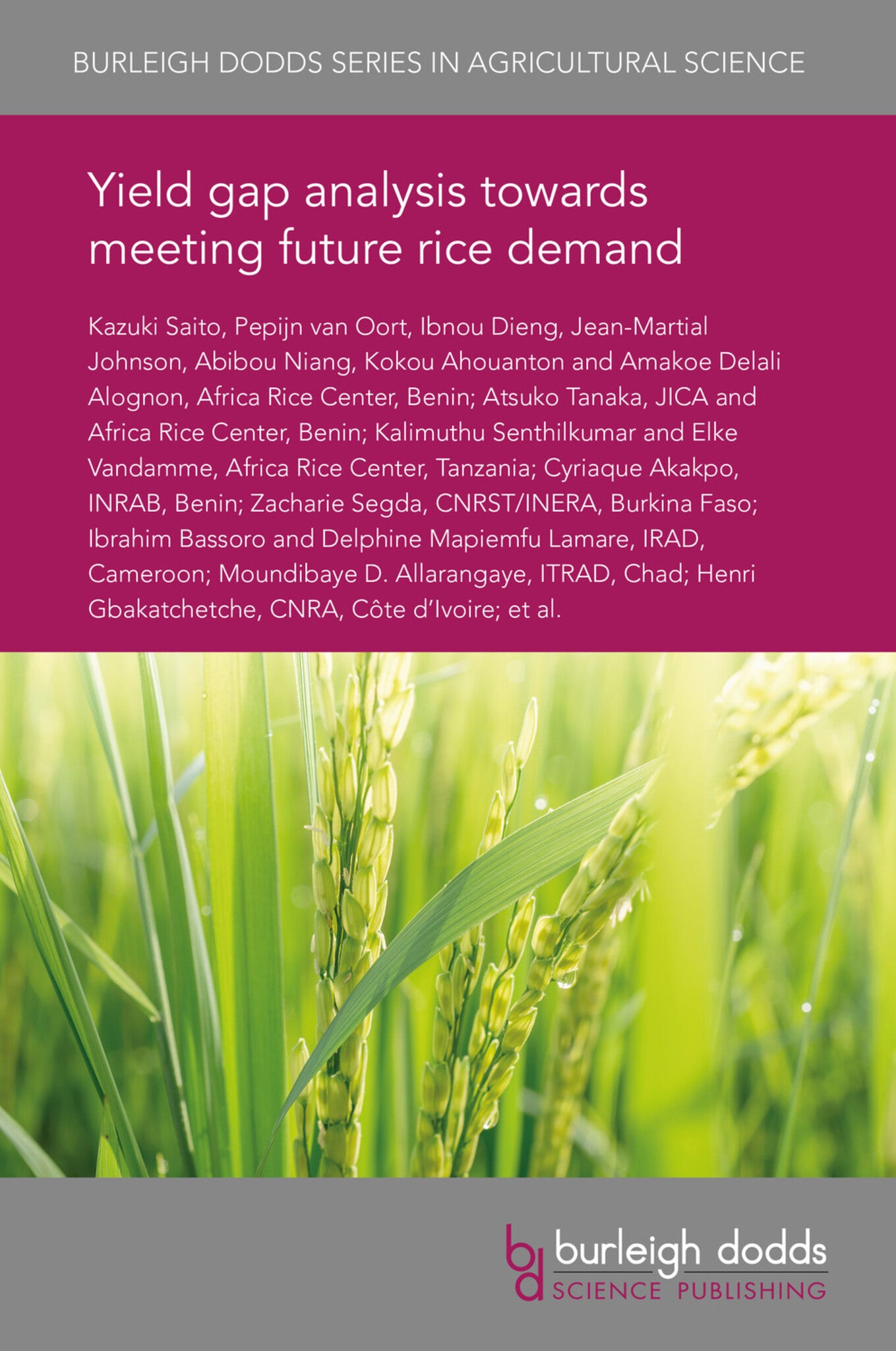We're sorry. An error has occurred
Please cancel or retry.
Yield gap analysis towards meeting future rice demand

Some error occured while loading the Quick View. Please close the Quick View and try reloading the page.
Couldn't load pickup availability
- Format:
-
31 May 2017

Rice provides 20% of the world’s food energy, and increased rice production owing to growing demand needs to be derived mainly from existing agricultural land. This requires reducing the ‘yield gap’, which is defined as the difference between potential yield and average on-farm yield obtained by farmers.
In this chapter, we provide case studies of yield gap analyses using different benchmarks (potential yield, experimental yield and best farmers’ yield) for estimating yield gaps. We start with studies focusing on the quantification of yield gaps and then describe studies with a focus on identification of the causes of yield gaps. We conclude with a discussion of the challenges to achieving better quantification of yield gaps and their causes, and the implications of yield gap studies for sustainable agricultural development to meet future rice demand.

TECHNOLOGY & ENGINEERING / Agriculture / Sustainable Agriculture, Agronomy and crop production, TECHNOLOGY & ENGINEERING / Agriculture / Agronomy / Crop Science, Sustainable agriculture

1 Introduction 2 Studies on quantification of yield gaps 3 Studies to identify causes of yield gaps 4 Future trends and conclusion 5 Where to look for further information 6 References



